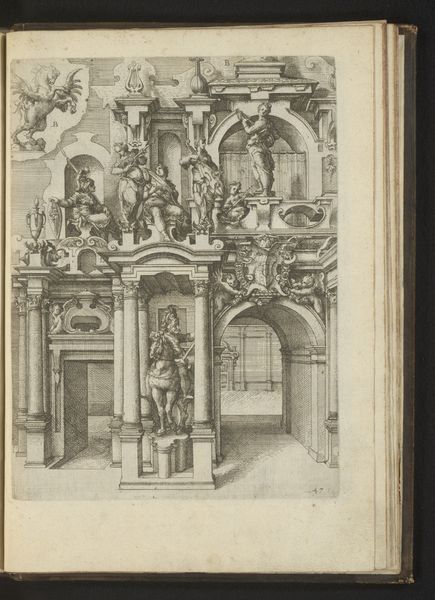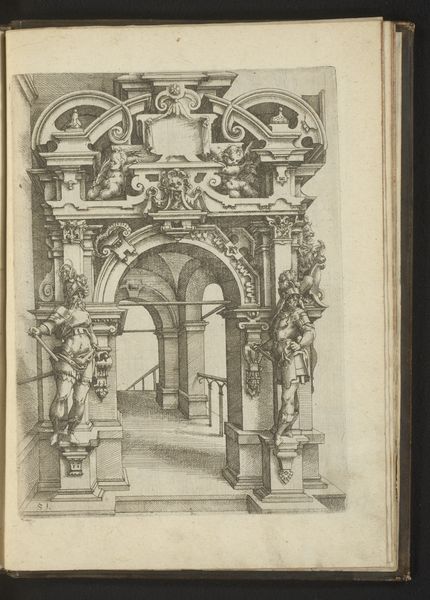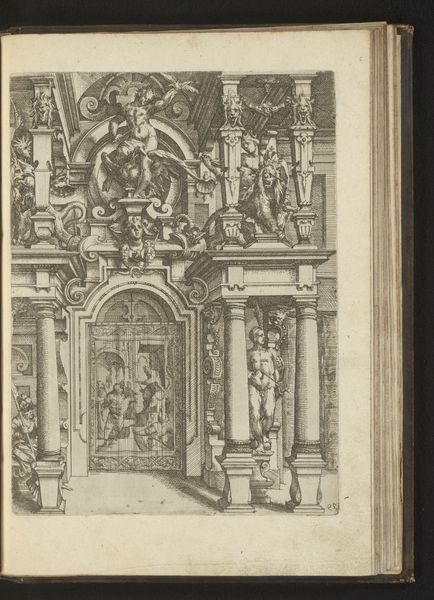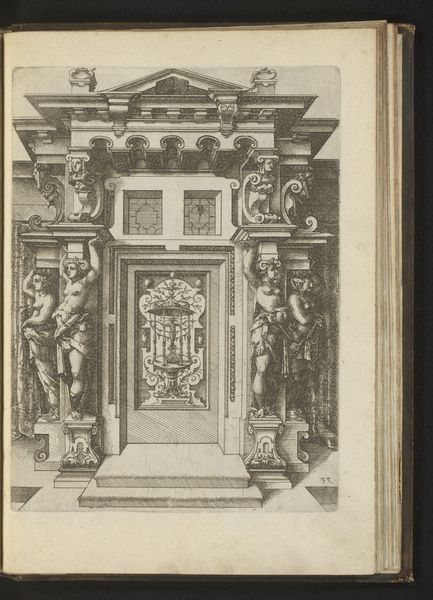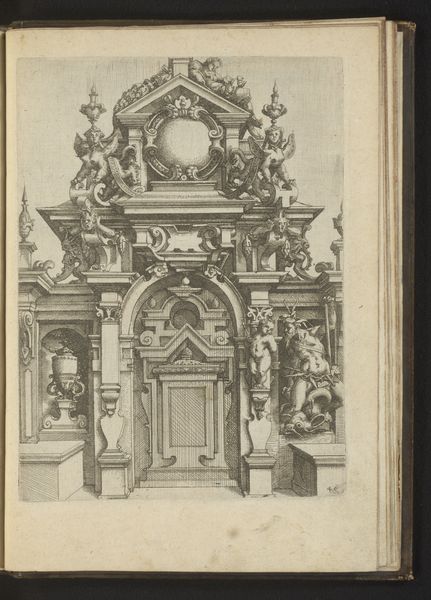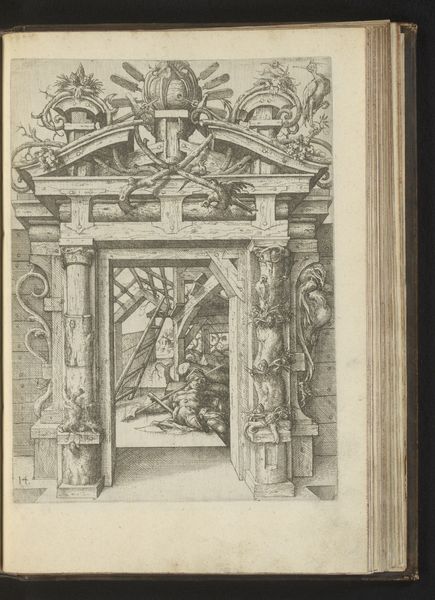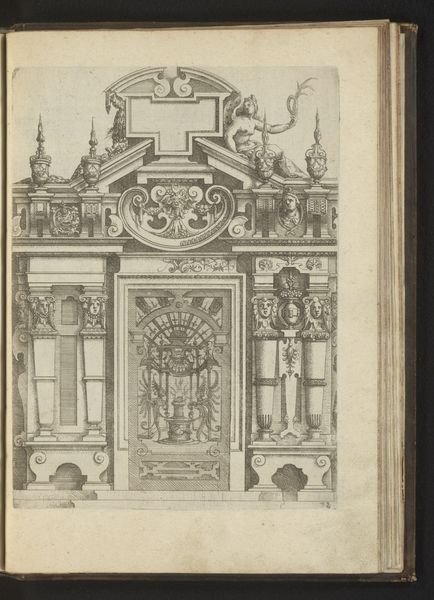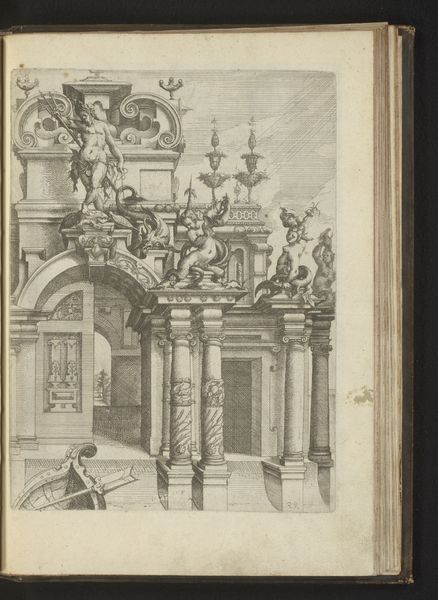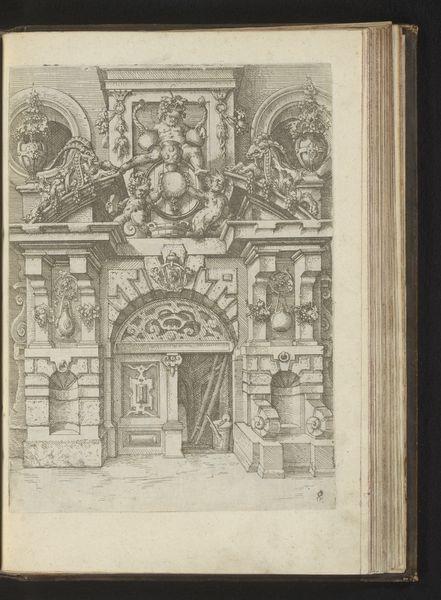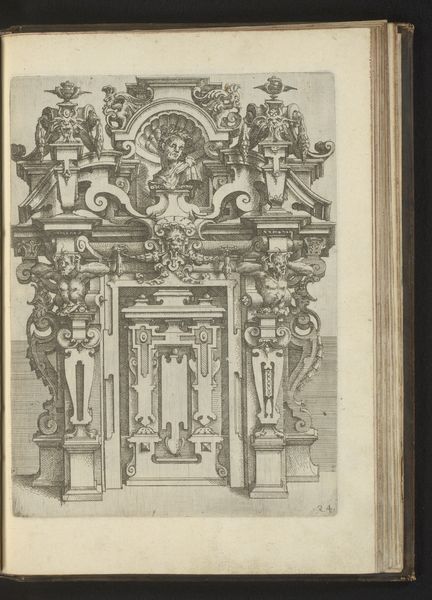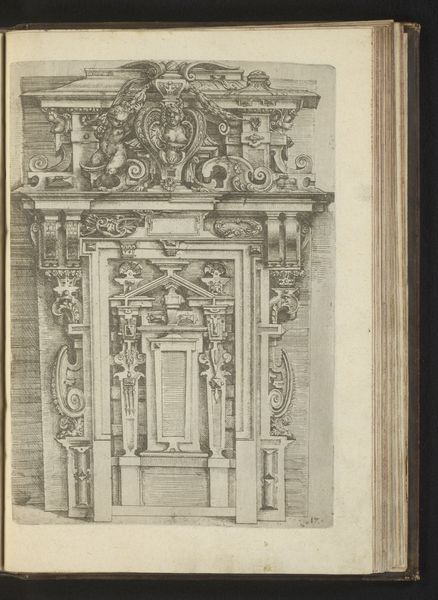
Portaal met nissen met daarin de beelden van Mars en Hercules en bovenaan een wapenschild met Diana en een stadspatroon 1593 - 1595
0:00
0:00
drawing, ink, engraving, architecture
#
drawing
#
ink drawing
#
mannerism
#
figuration
#
11_renaissance
#
ink
#
engraving
#
architecture
Dimensions: height 246 mm, width 186 mm
Copyright: Rijks Museum: Open Domain
Editor: So, this ink drawing, "Portaal met nissen met daarin de beelden van Mars en Hercules en bovenaan een wapenschild met Diana en een stadspatroon", was made by Wendel Dietterlin sometime between 1593 and 1595. It's incredibly intricate. It looks like an architectural design. What catches your eye? Curator: Well, immediately I see a Mannerist sensibility at play here, not just in the figuration but how it reflects the politics of display at the time. These elaborate portals weren't just about aesthetic pleasure; they were about projecting power. What would Mars and Hercules represent to the viewer? Editor: Strength, perhaps? Military might and classical virtue? Curator: Exactly! And the inclusion of Diana, a symbol of the hunt and the moon, and that city patron… who were these images trying to impress and what kind of message would a patron wish to signal? Also, what impact did the Protestant Reformation have on artistic patronage? Editor: So, you're saying that even architectural drawings like this one were ways for people to declare their allegiance and reinforce social hierarchies during a time of intense religious and social upheaval? Curator: Precisely! Dietterlin wasn't simply creating a beautiful image. He was participating in a visual dialogue about power, religion, and civic identity in a fragmented Europe. Editor: That’s a fascinating way to see this; it is about cultural performance in visual form. Curator: Indeed! Art becomes a stage upon which social dramas are enacted. It pushes us to think critically about why these specific figures were chosen, and how they communicated specific beliefs within a historical framework. Editor: I'll definitely think about art and architecture differently now. Thank you!
Comments
No comments
Be the first to comment and join the conversation on the ultimate creative platform.
